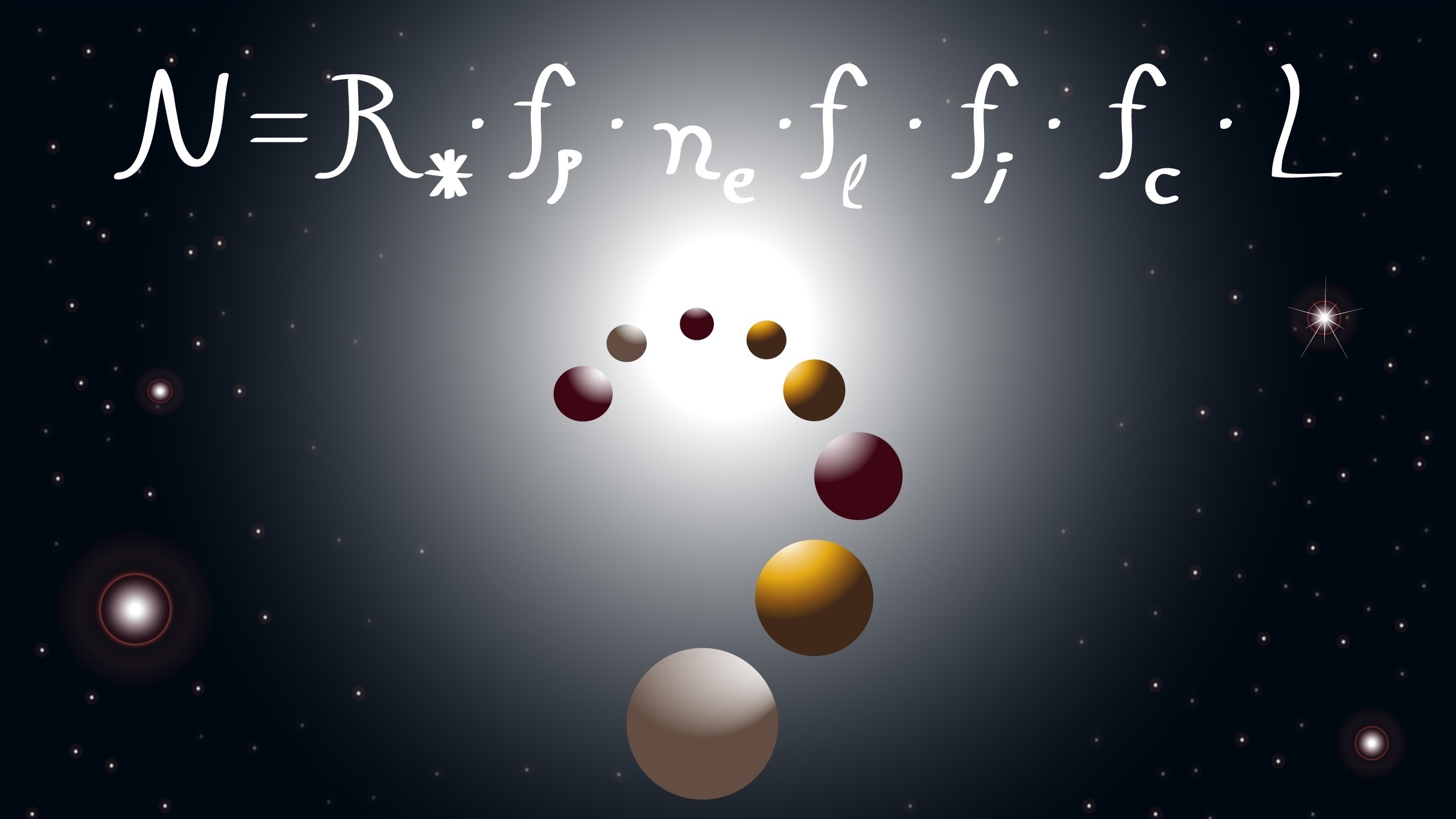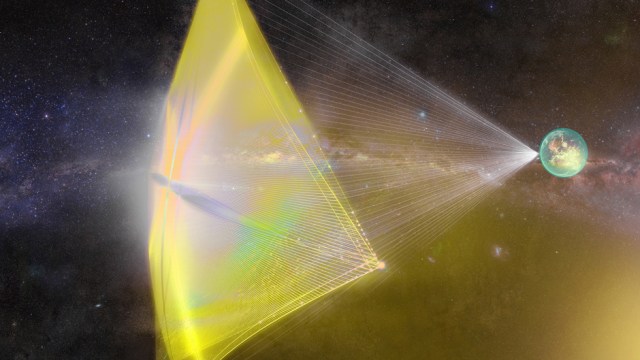How the pursuit of pleasure could doom all intelligent life to a blissful extinction

- The global population is set to peak in 40 years, then decline.
- From sex toys to AI chatbots, humanity’s separation of emotional rewards from procreation can be seen in the rise of "emode" technology.
- If the pursuit of happiness is the primary explanation for our decreasing fertility rate, this tendency might be true not just for humans but for all intelligent life — providing a possible explanation for the Fermi Paradox.
In a comprehensive study published in The Lancet, an international team of demographers predicts a global population peak in 40 years, followed by a continuous decline. This decline, driven primarily by low birth rates, is expected to continue unabated, with far-reaching implications for society, the economy, and geopolitics.
Although The Lancet forecast only extends to the year 2100, there is a tangible prospect that low birth rates could persist well beyond this century, potentially leading humanity down a gradual path toward extinction. The plausibility of such a scenario merits investigation.
Uncoupling emotion from procreation
To comprehend declining birth rates, it is necessary to delve into human motivation and the influence of emotions on judgment and choices. Extensive research attests to the central role emotions play in shaping the most consequential decisions in our lives. Their influence on decision-making is compelling and pervasive, altering both the focus and the depth of our thoughts.
For eons, natural selection has meticulously molded the human body, including the intricate workings of the brain. In the context of evolution, reproduction is what ultimately counts, and as a result, the most potent emotional rewards steer human behavior toward achieving this end. From the ecstasy of sexual encounters to the tender joys of romance, as well as the devotion to offspring, evolution has instilled within us a complex array of emotional incentives to ensure the survival and proliferation of our species.
Despite biological links between procreation and emotional rewards, humans have devised ingenious methods to separate them. A prime illustration of this can be seen in the invention of contraceptives, which has allowed couples to enjoy sex while simultaneously avoiding conception.
Alternatively, consider the deep bond between a devoted pet owner and their furry companion. Pets have the remarkable ability to elicit feelings of affection that are akin to the love a parent feels for their child. Pet ownership is currently growing, with more and more people embracing their pets as surrogate offspring.
Another example of our capacity to uncouple procreation from its emotional rewards is found in the rise of virtual romantic relationships. With the advent of AI chatbots that mimic human speech, there are reports of people forming deep emotional connections with their virtual companions and even falling in love with them.
The power of “emode” technology
To explore how far emerging technologies could transform our lifestyles and relationships, here’s a thought experiment: Imagine a revolutionary new invention called Emode (Emotion Modification Device) that gives the user unparalleled control over their emotions. With an Emode, you can (1) experience the entire spectrum of human emotions; and (2) choose how you feel at any moment, irrespective of the circumstances you are in.
What would you do with an Emode? Would your life improve if you could adjust your mood any time? Would you use it to empathize with others and feel what they are feeling, or to make yourself feel better? And how might the Emode impact your personal and professional relationships, career, and leisure activities?
As we consider these questions, we can shift the focus of this thought experiment into the real world by defining an emode (uncapitalized) as any tool, method, or mechanism that a person uses to alter their emotional state. In contrast to the Emode ideal, a typical emode would operate within a limited spectrum of emotional states and possess a limited degree of effectiveness in eliciting said states.
Take, for instance, the ubiquitous TV, a classic emode that enables us to alleviate boredom or unwind after a long day. The television’s enduring popularity largely can be attributed to its ability to excite curiosity. By catering to this and other emotions, the TV has become a staple device for those seeking entertainment. Modern streaming services like Netflix, YouTube, and TikTok have taken this to the next level, providing an even wider range of content with unparalleled convenience. Consequently, our screen time has increased as the emotional stimuli from these platforms often prove more compelling than our surroundings.
The vibrator (a sex toy) has earned its reputation as a popular emode. Designed for self-pleasure, it taps into the potent emotional incentives that evolution has honed to promote reproduction. Likewise, mood-altering substances, many of which remain illicit, represent another facet of emode technology. As many can attest from personal experience, even small doses of certain chemicals can yield powerful emotional effects.
While far from ideal, these emodes offer a glimpse into what can be achieved when we manipulate our biology. The broadest definition of emode technology would encompass everything from cocktails and pop songs to meditation and prayer. Our emotions and our intellect, the two pillars of our humanity, ensure that emode technology is constantly evolving, and it seems likely that we can expect an abundance of increasingly potent emodes in the years ahead.
Falling fertility
Over the past six decades, fertility rates have been decreasing worldwide, albeit with regional variations. Europe and the Americas have already fallen below the replacement level (the fertility rate needed to keep the population the same from generation to generation), while Asia is on the cusp. Only Africa remains well above the threshold that indicates population growth. However, as African economies and living standards continue to improve, they are expected to follow the path of developed nations. The Lancet study predicts that by 2050, 151 countries will have sub-replacement fertility, and by 2100, 183 countries will face the same fate.
In the developed world, people have an ever-increasing number of entertainment, lifestyle, and career options to choose from, all of which compete with the time and effort required to raise children. Novel emodes such as gaming, social media, adult websites, streaming services, and AI chatbots also shape our choices about parenthood. While no single emode has a decisive effect on birth rates, a combination of many different emodes can support a lifestyle that is emotionally satisfying without the need for children.

As people continue to find fulfillment in non-reproductive pursuits, the choice to have children becomes less emotionally compelling. Is it possible that this dynamic could ultimately drive our species to extinction, an unintended consequence of our pursuit of happiness?
Do emodes explain the Fermi Paradox?
The Emode hypothesis posits that sub-replacement fertility is an unintended consequence of our increasing reliance on technology to manage our emotions. Furthermore, the implications could extend beyond humanity, offering a plausible explanation for the Fermi Paradox: the conspicuous absence of intelligent life beyond our own planet.
In order to expand the emode hypothesis and address the Fermi paradox, an additional, well-founded assumption is required. Specifically, we presume that evolution by natural selection ultimately produces only sentient intelligence. This assumption stipulates that sentience, characterized by the capacity to experience positive and negative emotions, is a necessary aspect of any intelligence that possesses agency and can innovate technology. (The implication for AI is that without sentience, AI lacks the capacity for agency, though it can still be a highly advanced tool, as is currently the case.)
With these assumptions in place, we can trace the evolutionary arc of intelligent life: (1) a long period of evolution by natural selection, a process fueled by random mutations, repeated over countless reproductive cycles until a sentient species emerges with sufficient intelligence to develop technology; (2) a brief technological phase, during which the species advances its technology in pursuit of improved quality of life, diminishing its reproductive drive in the process; and (3) eventual extinction, typically through a gradual decline in population — a blissful fade-out.
When we contemplate the ephemeral nature of intelligent species and the rarity of planets with the capacity to sustain them, the probability of two alien civilizations blossoming in close proximity and flourishing concurrently appears quite low. Consequently, the spans of time and the vast distances of space could be keeping us separated from extraterrestrial civilizations, rendering our efforts to detect them fruitless.
It is intriguing to think of intelligent life — unlike plants and microbes — as an evolutionary dead end.





